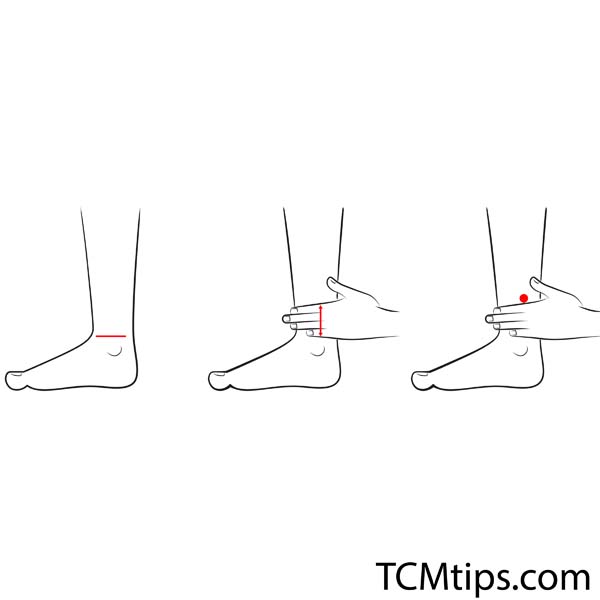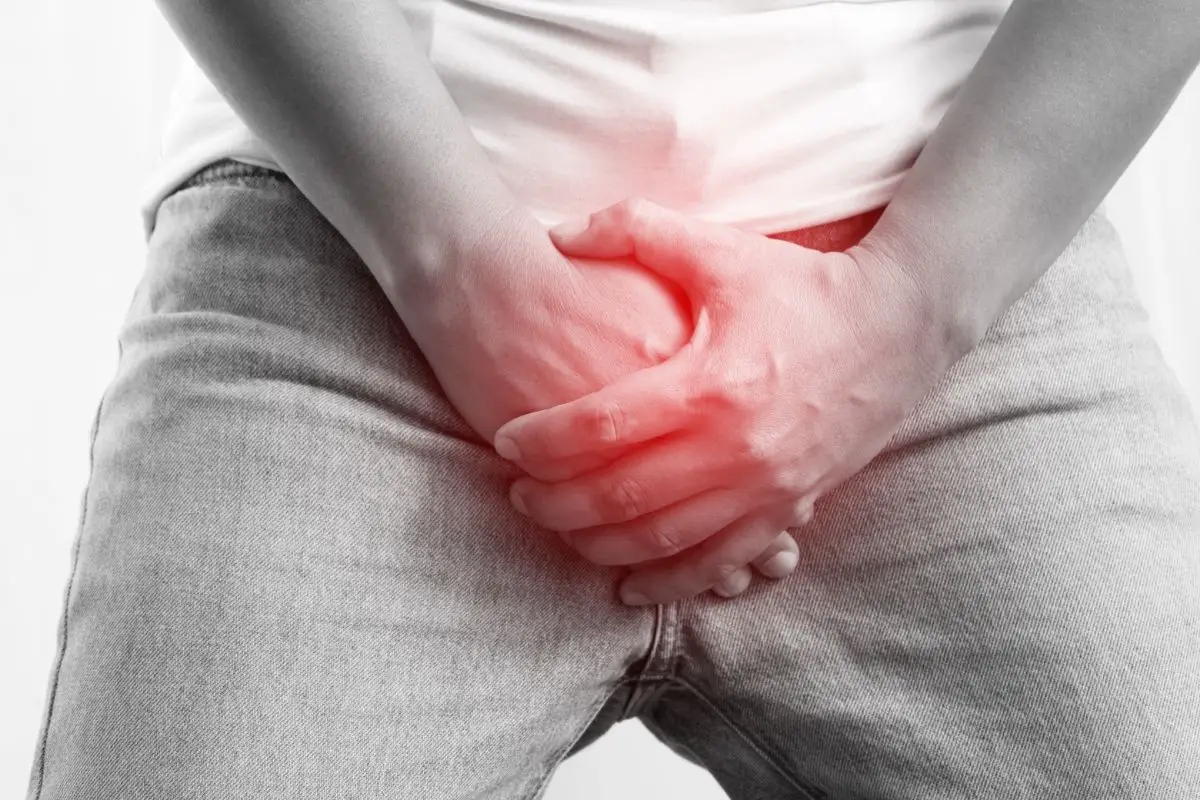Acupuncture is considered to be one of the oldest types of preventative treatment and is derived from ancient homeopathic Chinese medicine.
But I’ve often wondered, is an acupuncture pen for prostate issues an effective method of treatment?
Typically, acupuncture is used following a medical diagnosis.
The idea behind acupuncture allows the body to produce natural substances like endorphins, which alleviate pain in other areas of the body.
The prostate is a gland located in the area between the bladder and the penis. It’s about the size of a walnut, but when it is affected by a medical condition, it can increase in size.
There are several ailments associated with the prostate gland, including benign prostatic hyperplasia (BPH), prostatitis, and prostate cancer.
In this article, we’ll be examining the effects of using an acupuncture pen for prostate problems. We’ll first take a look at the main prostate conditions, then discuss how an acupuncture pen can be used as treatment.
The Three Main Prostate Conditions

Prostatitis
Prostatitis is often caused by an infection in the prostate, though this is not always the cause. There are two main types of the condition: chronic prostatitis and acute prostatitis.
The most common type of prostatitis is chronic prostatitis. With this type of condition, symptoms come and go over several months. This condition is milder than acute prostatitis.
There is a growing body of evidence that indicates that acupuncture is a promising therapeutic avenue for relieving symptoms of chronic prostatitis.
A study published in the Medicine (Baltimore) medical journal involving randomized control trials with 471 participants concluded that real acupuncture treatments led to significant reductions in pain and improvements in quality of life.
Acute prostatitis is a potentially life-threatening condition in which symptoms come on suddenly and require immediate treatment. Failure to seek immediate treatment can be disastrous for your health.
Benign Prostatic Hyperplasia (BPH)
Benign prostatic hyperplasia affects virtually all men over 50. The main symptoms of BPH are difficulty urinating, a weak urine stream, or not being able to completely empty your bladder.
It is a common condition that comes with age for most men.
There’s a common misconception that BPH is prostate cancer, which it isn’t, and having BPH does not make you more likely to develop prostate cancer.
These conditions are completely separate from one another, and there is no connection between the two.
Benign prostatic hyperplasia rarely leads to other conditions, but there is a chance that those who suffer from BPH can develop kidney problems, including kidney failure.
This is because BPH influences the body’s ability to urinate.
A 2017 study conducted by a team of researchers concluded that there were significant changes observed in favor of the use of acupuncture to treat moderate to severe benign prostatic hyperplasia.
They also found that, based on their initial findings, more clinical investigations should be conducted to measure the full benefits.
Prostate Cancer
Prostate Cancer is the most common form of cancer in men, apart from skin cancer.
The good news is that if caught early enough, prostate cancer has a high cure rate. However, if left untreated, it will eventually spread throughout the body.
As is the case with many types of cancer, early detection is key for survival.
There is a strong push for greater investigation into using acupuncture pens for prostate cancer to relieve pain.
Certain complications can arise in advanced prostate cancer patients, including bone metastasis, which leads to bone pain and fractures.
The use of acupuncture to treat pain caused by prostate cancer is largely still awaiting more evidence, according to this study published in 2019.
There aren’t any early warning signs of prostate cancer. Men with prostate cancer can’t feel the growing tumor pushing against anything, which translates to no pain.
It’s vital to get regular prostate checks, especially if you’re over 50.
How Can An Acupuncture Pen Be Used To Treat Prostate Problems?

An acupuncture pen is designed to treat a variety of different ailments – from hormonal problems to brain conditions (e.g., see this article on electric acupuncture pens good for multiple sclerosis), so it should be no surprise that it can also be used to treat prostate issues.
But how does an acupuncture pen for prostate problems actually work? And what ailments can it alleviate?
Here are some of the potential benefits of how using an acupuncture pen for prostate problems can help sufferers and improve their quality of life:
- For pain relief
- Treating urinary tract symptoms and infections
- Reducing Inflammation
- Treating an enlarged prostate
- Fighting Infection
- Increasing blood flow
- Aiding bladder control and urinary urgency
One of the primary reasons why many people seek out acupuncture is because they suffer from severe pain. If you’re experiencing pain due to a prostate issue, then you could benefit greatly from using an acupuncture pen for prostate pain.
By using an acupuncture pen for prostate pain and stimulating the acupoints listed below, you can reach deep tissue and reduce inflammation of the area.
Inflammation is one of the leading causes of pain and discomfort. If you’re experiencing pain due to inflammation, then it’s time to consider using an acupuncture pen.
Inflammation occurs when white blood cells rush to the site of injury. These cells release chemicals called cytokines, which cause swelling and pain.
You can relieve this type of pain by applying heat to the area where the inflammation is occurring. Heat therapy works by increasing circulation, which reduces inflammation. Stimulating the acupoint Ren-12 is a great choice for reducing inflammation associated with prostate issues.
You can do this by placing an acupuncture pen on the affected area. This allows you to apply heat directly to the painful area. For more specific directions, take a look at our article How To Use An Acupuncture Pen.
If you’re still uncertain about the efficacy of acupuncture pens, take a look at this article titled Do Acupuncture Pens Work – You’ll be convinced in no time!
If you’re experiencing pain due to a prostate issue, then you could benefit greatly from using an acupuncture pen for prostate pain.
By using an acupuncture pen for prostate pain and stimulating the acupoints listed below, you can reach deep tissue and reduce inflammation of the area.
Inflammation is one of the leading causes of pain and discomfort. If you’re experiencing pain due to inflammation, then it’s time to consider using an acupuncture pen.
Inflammation occurs when white blood cells rush to the site of injury. These cells release chemicals called cytokines, which cause swelling and pain.
You can relieve this type of pain by applying heat to the area where the inflammation is occurring. Heat therapy works by increasing circulation, which reduces inflammation.
Stimulating the acupoint Ren-12 is a great choice for reducing inflammation associated with prostate issues.
You can do this by placing an acupuncture pen on the affected area. This allows you to apply heat directly to the painful area.
Acupoints To Use For Prostate Pain
Here is the list of acupoints you should use if you want to try an acupuncture pen for prostate pain.
Using these acupoints in your acupuncture treatment plan can help with benign prostate hyperplasia, chronic prostatitis and alleviate the adverse effects of prostate cancer:
Acupoint: Bl-31 (Other Names: Urinary Bladder-31/Shang Liao/Upper Crevice)


This point is deeply linked to sacral pain and is also known to be one of the best pressure points for pain control in the buttocks.
An acupuncture pen for prostate pain can be used at this acupoint to calm the nerves found in the lower area of the pelvis and spine and greatly improve a sufferer’s quality of life.
This point is easy to locate quickly as it is about 0.8 cun to the right of the first spinal protrusion that can be felt starting at the base of the spine.
Pressing this acupoint improves the contractile function of the bladder and improves the feeling of residual urine and nocturia. It can be extremely helpful in relieving pain associated with Urinary Tract Infection.
This is also one of the acupressure points to start labor.
Acupoint: Bl-33 (Other Names: Urinary Bladder-33/Zhong Liao/Middle Crevice)

This acupoint is known for its support for bladder health and works in close relation to Bl-31 as they both have similar results once stimulated.
Acupoint Bl-33 is connected to the lumbar and sacral region and can relieve pain in both areas when it is stimulated.
If you have located the Bl-31 acupoint, then you should easily locate Bl-33. The Bl-33 acupoint is located in the second sacral forearm beneath the Bl-31 point.
Stimulating acupoint Bl-33 once or twice a day will greatly improve prostate pain.
Bl-33 is also one of the acupressure points normally used for pelvic pain.
Acupoint: Ren-12 (Other Names: The Conception Vessel-12/Zhong Wan/Middle Epigastrium)

Ren-12, also known as Zhongwan in Chinese, is the acupoint responsible for harmonizing the stomach and the spleen and resolving dampness.
Ren-12 is used to treat abdominal distension, epigastric pain, acid regurgitation, and even assist with the symptoms of a cough.
Ren-12 can be found by placing four fingers side-by-side above the navel.
Ren-12 is also frequently used as one of the acupressure points to increase estrogen.
Acupoint: SP-6 (Other Names: Spleen-6/San Yin Jiao/Three Yin Intersection)

Acupoint SP-6 or San Yin Jiao is often referred to as the Three Yin Intersection due to its crossing point located between the liver, spleen, and kidney meridians.
Stimulating this acupoint with an acupuncture pen has many benefits associated with prostate issues, such as assisting with urinary functionality, nourishing blood flow, and strengthening of the spleen, stomach, and kidneys,
To locate this pressure point, place the palm side of your hand against the high point of your medial malleolus. SP-6 can be found 3 cun above the medieval malleolus at the index finger edge of your hand, on the posterior border of the tibia.
SP-6 is also used as one of the acupressure points to treat ovary cysts.
 P. Sze
P. Sze 


















